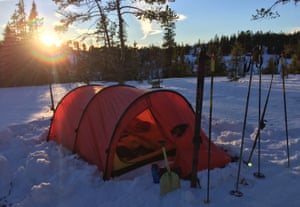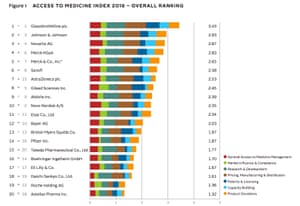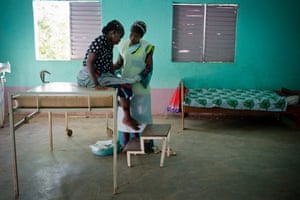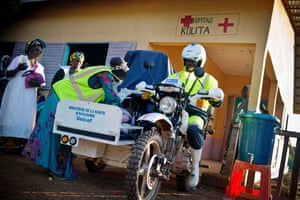There is an important question that begs an answer: is modern medicine the best approach to wellness?
Unfortunately, the unexamined assumption has been yes, but the truth is “not really”.
In some instances of emergency and specific conditions like trauma, fast-growing tumors, and acute heart attacks and strokes, medicine is able to intervene in the disease process, mend broken bones, and stabilize people with heart attacks, etc.
However, 20 years ago the government Office of Technology Assessment clearly stated that only 10 – 20 % of medical and surgical procedures have been scientifically proven. That leaves a whopping 80 – 90% that equates to a guessing game.
In our conscious or unconscious need as human beings to be “taken care of”, we have submitted ourselves to modern medicine. In doing so we must also accept the dark side of medicine.
This trade-off may explain why we seem to be so quick to ignore the mounting evidence that medicine is the number one killer in America.
An aging population wants nothing more than to know how to create a longer and healthier life span and turns to medicine for the answers. However, medicine, purported to base itself on science, has not entered the field of anti-aging or wellness, and is completely ill equipped to even give an opinion.
At this point, it might be a good time to quote Voltaire, who lived from 1694-1778. He said: “Doctors are men who prescribe medicines of which they know little, to cure diseases of which they know less, in human beings of whom they know nothing”.
Medicine is becoming quite adept at causing iatrogenic (caused by medical intervention) injury.
Every year, over the past 20 years, two or three studies have surfaced showing a growing number of people injured by Rx drugs, including treatment with toxic drugs used for non-life threatening conditions such as birth control.
As these studies slowly came before us, as a society we still held on to the notion that medicine was working in our best interest. No one took the time or trouble to compile all the statistics. No one identified the various areas of medicine, each of which causes iatrogenesis or imagined symptoms, ailments or disorders induced by a physician’s words or action. That was a nice way of saying ‘their speculative bullshit’. And when the different injuries and deaths were added up, the final number was incredible.
In a recent compilation of deaths due to properly prescribed drugs, drug errors, surgical mistakes, medical procedure mistakes, bedsores, malnutrition in nursing homes, and hospital based infections, it was found that iatrogenic medicine is the leading cause of death in America.
According to research done by the Nutrition Institute of America under the auspices of Dr. Carolyn Dean and Gary Null, it was found that the 2001 heart disease rate was 699,697; the annual cancer death rate was 553,251. But the annual iatrogenic rate was 783,936.
That’s just the deaths. The number of people injured annually by Rx drugs is 2.2 million; the number of unnecessary antibiotics prescribed annually for viral infections is 20 million; the number of unnecessary hospitalizations annually is 8.9 million; and we really have no way of knowing how many premature deaths can be attributed to overuse of X rays.
Be prepared for another shock. Most studies that care to delve into the topic of what mistakes actually get reported are pretty clear that only 5%, or 1 in 20 errors, are recorded in black and white. We also know that about 20% of mistakes can end up in death, so the undisclosed 3/4 million deaths may be just the tip of the iceberg.
To add insult to injury, drugs are synonymous with modern medicine. “Drugs” and “medicine” are interchangeable words in the dictionary and in most people’s minds, and it’s hard to believe that drug-based medicine is only about 100 years old because of its pervasive hold on our society.
With the discovery of the “Germ Theory”, medical scientists convinced the public that infectious organisms were the cause of illness, not their lifestyle and dietary choices.Finding the “cure” for these infections proved much harder than anyone imagined. Right from the beginning, chemical drugs promised much more than they delivered. But far beyond not working, the drugs also caused incalculable side effects.
The drugs themselves, even when properly prescribed, have side effects that can be fatal. Fully half the drugs prescribed are eventually pulled from the marketplace due to undeniable side effects. By then, the drug companies have laughed all the way to the bank pocketing billions of dollars in profits from an unsuspecting society and are busily marketing the next catastrophe.
The leading causes of adverse drug reactions are antibiotics (17%), cardiovascular drugs (17%), chemotherapy drugs (15%), and analgesics and anti-inflammatory agents (15%). It is, however, probably impossible to estimate the morbidity and mortality due to drugs such as synthetic hormone replacement therapy and birth control pills taken by millions of Americans.
And we haven’t even scratched the surface by not addressing the horrors of Ritalin and Prozac and the mass destruction of shootings and killings at public places by people subjected to these drugs by a psychiatric agenda that never does any tests or blood work and yet throws out the ADHD and Autism labels at will just to push drugs and control people that possibly think out of the box.
NBC’s “Dateline” wondered if your doctor is moonlighting as a drug rep. After a year-long investigation, they reported that because doctors can legally prescribe any drug to any patient at any time for any condition, drug companies heavily promote “off-label”, and frequently inappropriate and non-tested uses of these medications in spite of the fact that these drugs are only approved for specific indications for which they have been tested.
How modern medicine has come to be the number one killer in America is as incredible as it is horrifying. Doctors don’t think of themselves as killers, but as long as they promote toxic drugs and don’t learn non-toxic options, they are virtually pulling the trigger on helpless patients and transforming the Hippocratic Oath into the Hypocritic Oath.
So, what can you do to escape this dependence on modern medicine? Well, maybe there really is no escape but there sure can be a decrease in the dependence by putting your health back in your hands.
If you are eating the flesh of rotting cow bodies, or rotting pig bodies, or rotting fowl bodies, or rotting fish bodies, or dairy products, you need to stop. That includes “range fed” as well. Come on, do you really think that some animal not in a CAFO is running up to someone with a gun or a knife and begging, “Kill me, kill me, please, kill me”.
In reality, when any creature is faced with harm or death, anxiety sets in. Adrenalin pervades the body as do fear hormones. And even though this is what people are eating we are confused as to why there is so much hostility, fear and anxiety in the world. There is so much truth in that old saying, “You are what you eat”.
If you are eating refined grains like white flour products and white rice, you need to switch to whole grains like brown rice, red rice, wild rice, millet, Quinoa, buckwheat, etc. And if our “daily bread” was so great, why is there so much gluten intolerance? Gee, do you think the additives and synthetic chemicals could have anything to do with that?
If you are eating the menstrual cycle of chickens (eggs), you need to stop.
If you are eating malasadas, which are popular in Hawaii and donuts, which the police love, which are nothing more that balls of white flour covered in sugar and cooked in grease, you need to stop.
If you are shopping in supermarkets and not reading labels, you need to start.
The rule is two-fold: if you can’t pronounce it, don’t eat it; and, if man made it, don’t eat it.
If you are still ingesting embalming fluid through diet drinks containing Aspartame, you need to stop.
If you are using “Splenda” (sucralose), which is produced from chlorine, or neurologically damaging Aspartame, which was thrust upon us by Donald Rumsfeld just so he could become rich, as sweeteners, you need to stop.
Everything you are preparing to eat can be transformed into nutritious fare by switching the ingredients.
Whole for refined; tofu and analogs for flesh; organic for pesticide and insecticide laden soy, rice, cotton, sugar, and corn; almond, rice or hemp for dairy milk; and egg-less for egg mayonnaise.
If you don’t have a clue, get some vegetarian cookbooks and shop in natural food stores. Be careful though as most of their products contain MSG euphemisms.
Listen to “Health Talk”. It’s a call-in show and I will gladly answer your questions. Feel free to contact me at any time. If you can’t tune in, go to www.healthtalkhawaii.com and listen to uploaded shows, or on Saturday morning at 8AM Hawaii time log in on your computer to www.kwai1080am.com, and listen to my show as it is being streamed.
You are and should be responsible for your health. Not your doctor, not your health care provider, not your neighbor, you!Besides, don’t you think that all that money you spend on prescription drugs could be put to a more enjoyable use if it were at your disposal?
Remember, the marathon of life starts with the first step. Don’t be afraid to take that step.
Aloha!
Sources:
www.articles.mercola.com
www.drhyman.com
www.quora.com
To learn more about Hesh, listen to and read hundreds of health related radio shows and articles, and learn about how to stay healthy and reverse degenerative diseases through the use of organic sulfur crystals and the most incredible bee pollen ever, please visit www.healthtalkhawaii.com, or email me at heshgoldstein@gmail.com or call me at (808) 258-1177. Since going on the radio in 1981 these are the only products I began to sell because they work.
Oh yeah, going to www.asanediet.com will allow you to read various parts of my book – “A Sane Diet For An Insane World”, containing a wonderful comment by Mike Adams.
In Hawaii, the TV stations interview local authors about the books they write and the newspapers all do book reviews. Not one would touch “A Sane Diet For An Insane World”. Why? Because it goes against their advertising dollars.
Treat a symptom with medicine but never the cause





